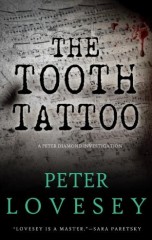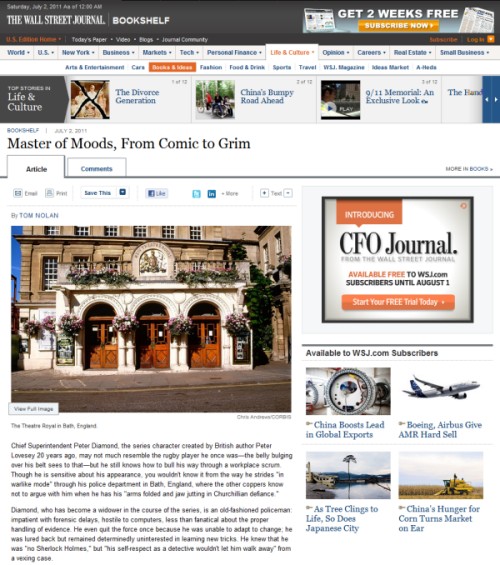by Louise Penny
(This text appears in the 2014 Soho Press edition of The Last Detective)
Welcome to THE LAST DETECTIVE, a novel that changed the face of detective fiction when it was released in 1991. It broke every template, every tradition, every ‘rule’ of the genre. Indeed, not only does Peter Lovesey break the rules with this book, so does his brilliant new protagonist. To say that Superintendent Peter Diamond, of the Bath Regional Police, is unruly would be a gross understatement.
Peter Diamond is impatient, belligerent, cunning, insightful, foul, laugh-out-loud funny, and so engaging that this wondrous book went on to spawn a series. The Peter Diamond books have won major awards for crime fiction internationally, hit bestseller lists, and inspired a generation of crime writers who saw that a novel can be a police procedural, a traditional mystery, an exploration of social issues. It can be literary, terrifying, funny, comforting all at once.
And it all started with the book that you hold in your hands.
As you’ll discover as you read THE LAST DETECTIVE, Peter Lovesey also plays with perspective, with the trustworthiness of the narrator, with your loyalties as a reader. And he does this by engaging not just your head, but your heart. What is crime fiction, after all, without caring?
THE LAST DETECTIVE is not simply a puzzle to be solved. It delves into why we do the things we do. Our choices. The suspect’s, the victim’s, the detective’s choices.
But at it’s heart, at the core, stands the conflicted, human, unpredictable man who will become our companion through the series. Peter Diamond. Who often seems to have a life independent of what his creator might have planned. And such is the mark of a great creation, and a brave writer. Peter Lovesey lets Diamond live and breathe and head off in unexpected, and endlessly fascinating, directions.
I am so excited for you, to be at the very beginning of this trend-setting, beautifully written, vivid series.
On a personal note, I first met Peter Lovesey at a Crime Writers Association awards gala in London, before my first book had even been published. He was hosting a table and I was so in awe of him I could barely look in his direction, never mind speak. But he made the unknown Canadian and her husband feel like the most important and precious people in the room.
I have long loved Peter Lovesey’s books. That day I fell in love with the man.
He went on to read, and endorse, my first book, which was generous beyond description and made a huge difference to my career. In a profession rich with supportive colleagues, Peter Lovesey manages to be in a category all his own. A creative, courageous and gifted writer, who is also a gracious, generous and kind man. A gentleman.
This is a wonderful book. The beginning of a superb series. It is such a pleasure to introduce you to one of the great (and thankfully not the last) detectives in crime fiction.




